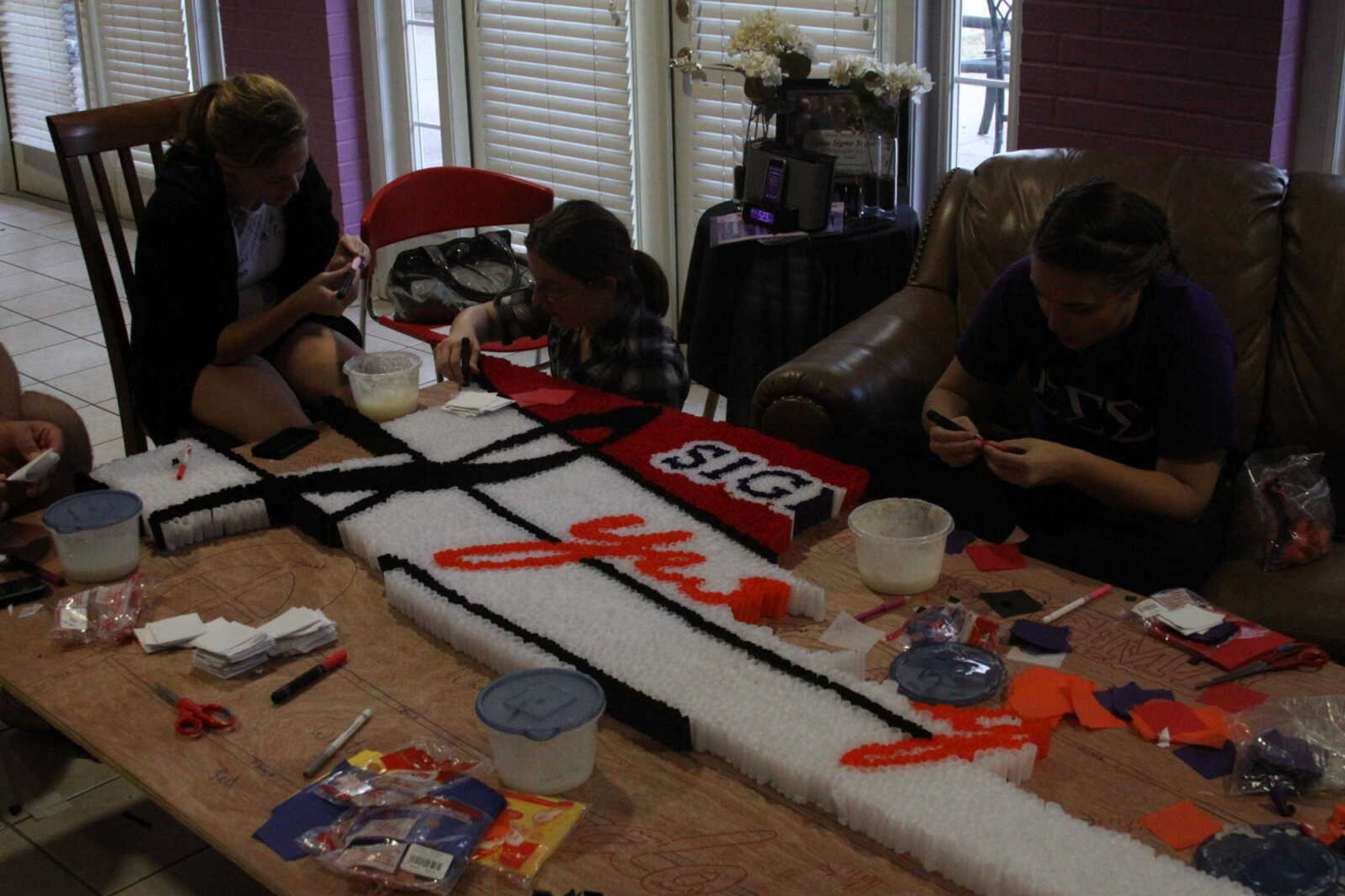Pomping 101: float decorating explained
Wrap a small square of special, fire retardant tissue paper around a marker, aligning the edge of the tissue paper with the edge of the marker cap. Make sure it is rolled tightly and fold down the rest of the tissue paper that is hanging off the marker. Dip the marker into a cup of glue. Stick the marker onto a plywood board and slowly lift, leaving behind the rolled up tissue paper and creating a pomp. Repeat a million more times.
Wrap a small square of special, fire retardant tissue paper around a marker, aligning the edge of the tissue paper with the edge of the marker cap. Make sure it is rolled tightly and fold down the rest of the tissue paper that is hanging off the marker. Dip the marker into a cup of glue. Stick the marker onto a plywood board and slowly lift, leaving behind the rolled up tissue paper and creating a pomp. Repeat a million more times.
Congratulations, you have just learned how to pomp a float.
Pomping is something that is very common on college campuses during the homecoming season. It is a way to decorate plywood boards that are just a small part of a larger float.
There are several different ways to pomp a float, such as using chicken wire instead of plywood and creating pomps with fingers instead of markers, but on the Southeast Missouri State University campus, the technique used with plywood and small markers is the most common used.
"Mizzou uses chicken wire but this just looks so much better," Adrienne Hawkins, a senior member of the Gamma Phi Beta sorority, said while pomping one night. "You can do more detail."
For the past month, organizations all across campus -- such as Sigma Alpha Iota and Phi Mu Alpha, Habitat for Humanity, and Alpha Xi Delta and Sigma Nu -- have been working tirelessly to create a design, purchase materials and rally their members so their floats will be done by the homecoming parade. This is no easy feat since the floats are generally 28 feet long and almost 14 feet high.
What each organizations' homecoming leaders plan on, though, isn't what they always get.
"This is what happens every year," Hawkins said. "We barely have any boards done with two weeks to go, the homecoming chairs yell at everyone, we don't sleep the last week and it all gets done. It's like tradition."
This will be Hawkins third homecoming and over the years she has perfected her pomping skills.
"I don't mind [pomping]," Hawkins said. "You get to hang out with people. I don't like the required eight hours thing, but I don't mind it."
Not everyone shares the same enthusiasm as Hawkins, though.
"I would rather cross the highway and back," Sigma Phi Epsilon freshman David Vo complained as he sat at a table rolling tissue paper around markers for the girls who would glue the pomps to the board.
"It's more tolerable when more people are here instead of just three or four people. You get nowhere [with only a few people]."
Not every organization uses the pomping technique to decorate its float. According to Joanna Shaver, coordinator for Campus Programming, Theta Xi and Gamma Sigma Sigma, one of the ten teams submitting their float for judging, are mostly painting their float.
"Traditionally, many of the Class A floats are a mixture of pomping, painting, paper mache and usually some sort of wood framing or construction," Shaver said about past floats in the parade. "There are no rules regarding the materials that may or may not be used, except for no fire or any other hazardous component."
After working for close to six weeks, the builders of the floats won't be worried about what materials were used; they'll just be glad that they won't have to look at small squares of tissue paper again until next year's homecoming.








